In the 1980s, paste filling technology was successfully tested in the Grunde mine in Germany [1], which solved the problem of serious low-concentration slurry filling and bleeding. 90 years of Gansu Jinchuan built a paste filling system [1], the system in preparation paste and delivery terms for our country has accumulated a wealth of experience, in particular through laboratory test loop was much lower than the hydraulic gradient experience Durand formula formula [2-3], followed by the completion of the Huize lead zinc ore [4], copper mine recorded a mountain [5] paste filling system played an important role. In 2006, China Taiping coal mine built the first coal mine paste filling system [6], and later in Xingtai, Xiaotun, Dai and Zhuang coal mines and other Suncun the paste filling [7].
Compared with slurry filling, the paste filling technology has the advantages of less filler loss, less cement required for the formation of the same filling strength, and high early strength [8]. The use of paste filling in the mining process can reduce the interference of the filling work on the recovery, reduce the drainage burden of the stope, and provide technical support for the tailings storage. However, the current cost of paste filling technology is still high, the dependence on high-power equipment is high, and the theory needs further breakthrough. In this paper, the research results of paste filling technology in China will be reviewed according to the order of paste slurry properties, transport and filling quality evaluation.
1 paste filling slurry
1.1 Paste Paste is a toothpaste-like fluid formed by optimally combining one or several filling materials with water. There are many discriminative indicators for paste. Canada uses concentration, slump and saturation as indicators. Germany uses workability (viscosity, yield stress) consistency and structural index as indicators. Australia uses fine fraction, concentration and slump. As an indicator [9], China usually uses slump and stratification indicators, and considers that the slump of the paste is 15 to 25 cm and the stratification is less than 2 cm [10]. Wang Hongjiang believes that a good paste can be formed when the rate of bleeding is 1.5% to 5% [11], and then the definition of the paste is perfected from the angle of grading of the tailings [10], Wu Aixiang et al. The solid mass fraction of the slurry at (200 ± 25) Pa is regarded as the critical concentration of the paste, and the paste is further defined [12]. At present, the accurate definition of paste is still not unified in the academic and engineering circles, and further important indicators and parameters need to be quantified.
1.2 Paste filling materials Mine paste filling materials consist of aggregates, gelling agents, admixtures and water. Commonly used aggregates are tailings, sanding and coal gangue. As the main cementitious material, cement has good cementation effect, but the cost is high. Because fly ash and slag powder can also have strong hydration reaction and play a role of cementation, it can also be used as a common cementing material, but in use. Multiple trials are needed to understand its contribution to paste strength. In order to improve the filling effect and further reduce the filling cost, Jiaojia Gold Mine mixes cement clinker, coal gangue, tailings, gypsum , mirabilite , alumite and lime into a cementitious material in a certain proportion [13], which is similar to the paste state; Huaqiang et al. developed two series of PL and SL fillers for coal paste filling [14]. In short, how to balance the filling cost and the filling body strength has always been a research hotspot in the engineering field.
1.3 Paste ratio and concentration Reasonable paste ratio should improve the homogeneity of the slurry and reduce the cost on the basis of ensuring the strength and fluidity of the filling [3]. In the production, it is determined that the slurry mix ratio is determined by laboratory tests and then verified by on-site industrial tests. Commonly used test optimization indicators are slump [15], uniaxial compressive strength [16] and stratification.
Concentration is the most sensitive factor in cementation filling [17], and the paste concentration is usually between 76% and 82% [18]. Since the fine particles in the filler have a large specific surface area, the formed filler has poor permeability. If the concentration is too low, the dehydration is difficult or the fine particles are lost with water, which affects the quality of the filling body [19].
1.4 The rheological rheology of the filling slurry refers to the fluid flow and deformation properties. The yield stress and viscosity are important parameters. The rheological properties of the paste slurry are in accordance with the Bingham model [20-21]. The following formula indicates:

Where τ is the shear stress experienced by the tube wall, Pa; τ0 is the yield stress, Pa; η is the viscosity, Pa·s; du/dy is the shear rate, s-1. In the laboratory, the rheology of the paste slurry is measured using a precision shear rheometer, mainly including Brookfield R/S+SST four-blade rotary rheometer [22-23], ThermoHAAKE rheometer [24], NXS-11 rotary viscometer [17] and tubular rheometer designed by China University of Mining and Technology [25-26], but the test standard of rheometer has not been unified.
In the engineering site, the use of the rheometer is limited due to its specific working environment. The slump test was originally applied to the concrete field, and its flow properties were reflected by the height of the concrete slump. Because the slump test experiment is simple and easy to use, it can detect the fluidity of the slurry to a certain extent, and is now widely used in mining filling.
In 1984, Murate constructed a relatively simple mechanical equilibrium model to find the relationship between slump and yield stress [27]. In 1991, Christensen revised the deficiencies of the Murate model and used the dimensionless model to calculate the relationship between the two [28]. Since then, researchers have used the collapsed cylinder to construct a yield stress-slump model, mostly using a dimensionless model. At present, there are two models of the dimensionless slump-yield stress relationship: conical slump, cylindrical slump [29]. Conical, dimensionless slump-yield stress model:

Where rt is the radius of the port on the fallen cylinder, m; rb is the radius of the lower port of the fallen cylinder, m; Ï„'0 = Ï„0 / ÏgH, which is the dimensionless yield stress; s' = s / H, is dimensionless åDrop; h'0=h0/H, is the dimensionless height of the undeformed segment; h'1=h1/H, which is the dimensionless height of the deformation segment; Ïg is the slurry gravity, kN/m3; H is the height of the collapse , m.
Cylindrical dimensionless slump-yield stress model:

It is found that the data measured by the conical dimensionless slump-yield stress model is not accurate under high yield stress conditions. The cylindrical dimensionless slump-yield stress model does not have this disadvantage, so it is in the engineering site. It is recommended to measure the yield stress using a cylindrical collapse bucket.
1.5 Dehydration equipment In the paste filling process, tailings dehydration is an important link. The Jinchuan Company, which was built in the early days, was dewatered by a belt filter [3], but the supporting storage area was particularly large, especially when using multiple sets of filling systems. The later-developed Huize lead-zinc mine and Chihong lead-zinc mine were all dewatered by deep cone thickener [19]. The deep cone thickener has high dehydration efficiency and can strengthen the flocculation effect of the flocculant on the particles. The world's largest deep cone paste thickener has been successfully operated in mines in China. The thickener has a diameter of 40m. In the field application, it can output 65.2% of dehydrated slurry at a speed of 2035m3/h [30]. The development of large-scale development of mines in China has provided valuable experience, but the reliability of deep cone thickeners needs to be further improved [31].
2 slurry conveying
2.1 Transmission resistance From 1973 to 1975, Chinese scholars used industrial filling tubes for long-term loop tests and obtained the Jinchuan empirical formula, which is much smaller than the internationally popular Duland formula [2], namely:

Where im is the hydraulic gradient of the slurry, Pa/m; i0 is the hydraulic gradient of the clear water, Pa/m; CV is the slurry volume concentration, %; g is the gravitational acceleration, m/s2; D is the inner diameter of the conveying pipe, m; v is the flow rate m/s; Cx is the particle settling resistance coefficient; γt is the solid material density, t/m3.
Wang Xinmin analyzed the frictional resistance loss from the rheological parameters of the paste slurry [20], and the formula is as follows:

Where, I is the total frictional resistance along the pipeline, Pa; L is the length of the calculated pipe section, m; Vcp is the average flow velocity of the slurry in the pipe, m/s. Wu Aixiang derived the hydraulic gradient formula by theoretical derivation [32]:

Where S is the floc structure coefficient; τs is the floc structure stress, Pa; μ0 is the plastic viscosity when the flocc structure is completely destroyed, Pa/s; μs is the change value of the plastic viscosity during the shearing process of the floc structure. Pa/s.
The study of the transport resistance formula provides a lot of theoretical support and design basis for the paste transportation in China. However, the composition of the filling slurry is complicated, and the slurry will bleed on the annular boundary near the pipe wall during the conveying process, and the formed water film will reduce the resistance during the conveying process [33], making it difficult to accurately calculate the conveying resistance, so in practice Loop tests are also required to obtain more reasonable design parameters. In order to reduce the amount of experimental engineering, Yu Runzhen and others have carried out a lot of research on computer simulation model simulation filling loop test [31, 34-35], which greatly improved the design production efficiency.
2.2 Filling double line and pipeline damage To ensure that the slurry reaches the stope smoothly, the filling system needs to select a suitable filling line. The filling line of any ladder pipe network in the stepped pipeline should be no more than the total times. In addition, the filling line of the cleaning line needs to be considered [36].
If the filling double line is too small or the step pipe network double line is too small, there is a large amount of residual pressure head in the whole pipeline or partial pipeline, which causes a dissipating flow. A large number of studies have shown that the dissipating flow will cause pipeline damage, and the slurry movement will wash the wall of the pipe and impact on the pipe wall at the air-slurry interface impact, bursting and cavitation [37], which can only be eliminated by energy dissipation [ 38]. Specific measures include: reducing the slope of the pipeline laying, increasing the length of the pipeline; reducing the diameter of the horizontal section to achieve high-pressure conveying, reducing the diameter of the vertical section to achieve low-pressure conveying [39]; inserting the orifice in the pipeline, using a computer Real-time control adjustments to suit operating conditions [38].
2.3 Slurry conveying facilities Paste pumps and ducts are important components of the paste system. The paste pumps in use in China are: Jinchuan KOS-2170 full hydraulic double cylinder piston pump [40], flow rate 60~80m3/h, continuous working pressure less than 8MPa, maximum working pressure less than 10MPa; KSP80H selected by Tonglushan Mine Double-cylinder plunger pump; Germany PM series pump, US C-250, C-700 series pump and HBT60 series pump produced in China can also meet the requirements of paste pumping [41].
The operating state of the conveying pipe is related to the progress of the mine production. In order to reduce the wear, the conveying pipe is generally made of metal material, mainly a seamless steel pipe and a wear-resistant metal pipe [41]. Real-time monitoring of pipeline working conditions, in order to replace pipelines in advance to prevent normal production progress due to pipeline wear.
3 Filler strength and other evaluation parameters
3.1 Stress characteristics and working principle of the filling body Under the condition that it is not affected by the structural surface, the rock mass within a certain range will be restrained and restrained by the surrounding rock mass. A large number of experimental studies have shown that: acting on the filling body The force is only 20% to 70% of the original rock stress [42]. When the external load acting on the filling body exceeds the elastic limit, the filling body is plastically deformed on the outside, and the inside is still elastically deformed, showing obvious residual strength characteristics [43].
Yu Xuezhen believes that the filling body has three working principles: stress absorption and transfer, that is, the self-organizing system of the stratum as a member of the underground structure after the consolidation of the filling body; the influence of the isolated ground stress on the mining. Due to the combined effects of the filling body, surrounding rock, ground stress, excavation, etc., especially the self-organization function of the system, the deformation of the surrounding rock is controlled [44].
3.2 Filler strength Filler strength is an important fill quality indicator. Commonly used design methods are empirical method, model method, and numerical simulation method.
(1) Empirical analogy. Selecting the appropriate strength [45], China's Fankou lead-zinc mine, Jinchuan mine and Jiaojia gold mine use the empirical analogy method to design the filling body strength.
(2) Empirical formula method. Cai Yijing regarded the filling body as a self-supporting artificial pillar, and calculated the mine filling height and the filling body strength, and obtained an empirical curve:

Where Y is the height of the filling column, m; X is the filling strength, 105 Pa; a is the filling coefficient, a = 0.6 to 1.1, when Y < 50 m, a = 0.6, Y > At 100 m, a = 1.0.
(3) Simulation method. The models of strength design mainly include the Taishaji model, the Thomas model and the Mitchell model. The Mitchell wedge model is now widely used. Using this model, the minimum strength required for the filling body can be obtained [46-47]. The formula is as follows:

Where, UCS is the uniaxial compressive strength of the filling body, Pa; γ is the bulk density of the filling body, N/m3; H is the height of the filling body, m; L is the length of the filling body, m.
Although widely used, the Mitchell model has some limitations: it does not consider the internal friction angle and the load on the upper part of the filling body, assuming that the cohesion between the filling body and the rock wall is equal to the internal cohesion of the filling body, ignoring the filling body and the rock wall. Between the shear stress and so on. In 2012 Li and Aubertin revised this model [48] and solved some problems:

Where P0 is the upper load of the filling body, Pa; B is the filling body width, m; the equivalent height of the H* wedge block, m; FS is the safety factor;  is the filling body friction angle, (°); α is the wedge shape The angle between the sliding surface and the horizontal plane, (°); r
s is the ratio of the cohesive force between the filling body and the surrounding rock, which is 0 to 1.
Formula (12) is suitable for a large aspect ratio (H/B>tanα); Formula (13) is suitable for a small aspect ratio (H/B<tanα). In addition, the intensity design can also be used numerical simulation [49-51], such as finite difference method, finite element method and boundary element method.
3.3 Other parameters of the filling body In addition to the strength, the parameters for evaluating the quality of the filling body are also the shrinkage rate, the topping effect and the unevenness. Taking these parameters into consideration, a set of filling body quality evaluation with multiple parameters is established. Standards are important for filling design and practice.
4 Conclusions (1) China's paste filling technology has made great progress in the development of 20a, the selection and proportion of filling materials, filling concentration and hydraulic gradient; at present, the definition of paste is not uniform, dewatering equipment and its supporting facilities Imperfections, pipeline wear, and a single evaluation of the quality of the filling body are issues that require in-depth study in the development of paste technology.
(2) In the past 10 years, scholars have done a lot of research in the field of coal paste, which promoted the development of coal paste filling technology in China.
(3) Paste is a high-concentration mixture composed of aggregate, gelling agent, admixture and water. The commonly used slump and stratification in China is used to discriminate the paste. Gelling agents account for a high proportion of the cost of filling materials, and research on low-cost gelling agents is of great significance.
(4) The rheology of the paste can be expressed by the Bingham model. The rheometer can accurately measure rheology and determine the yield stress. The slump can reflect the fluidity of the slurry and can calculate the yield stress. Because of its simple operation and convenient use, it is used in the engineering site.
(5) The frictional resistance of the pipeline can be determined by the combination of the formula and the loop test. The dissatisfied tube flow caused by the filling line being too small is the main cause of the squib and cavitation phenomenon. Through energy dissipation, the pipeline is monitored in real time to prevent the pipeline from being interrupted.
(6) Strength is the main factor affecting the quality of paste filling. The design methods include empirical method, model method and numerical simulation method. The establishment of a set of filling quality assessment criteria with multiple parameters will promote the development of mining design and production.
Author: Liu Qiong, Zhang Xiwei; School of Resources and Civil Engineering, Northeastern University, Key Laboratory of Deep Mine Safety and Mining, Ministry of Education of metal;
Article source: "Modern Mines"; 2016.5;
Copyright:
The Cashew Nuts Cleaning Line include Cashew Raw Material Grader , Cashew Raw Materia Steamer , Automatic Cashew Sheller,Nuts Dryer , Nuts Peeling machine , Nuts Grader ,Shell and Nut Separator
1.Cashew Raw Materia Steamer
2.Automatic Cashew Sheller
4.Cashew Nuts Peeling machine
5.Cashew Nuts Humidifier
6.Shell and Nut Separator
MODEL
TECHNICAL DATA
REMARKS
HLD-20 Cashew
Raw Material
Grader
Productivity:300kg/H
Power:1.5kw
Weight:360kg
Dimension:
3500*1200*1600mm
Capacity:300kg/H by Cashew
HLD-20 Cashew
Raw Materia
Steamer
Productivity:200kg/H
Weight:200kg
Dimension:
1000*1000*1300mm
Capacity:200kg/H by Cashew
HLD-20 Automatic Cashew Sheller
Productivity:100kg/H
Power:0.75kw
Weight:260kg
Dimension:
1500*1000*1600mm
Capacity:100kg/H by Cashew
(include 2Sheller,2Separator,1Air Cleaner,
1Sorter,1Centrifuge)
HLD-20 Nuts Dryer
Productivity:100kg/T
Power:11kw
Weight:260kg
Dimension:
1500*1000*1600mm
Capacity:100kg/H by Cashew
HLD-20 Nuts Dryer
Productivity:100kg/H
Power:0.3kw
Weight:60kg
Dimension:
640*650*1360mm
Capacity:100kg/H by Cashew
HLD-20 Nuts Grader
Productivity:200kg/H
Power:0.75kw
Weight:360kg
Dimension:
2500*1100*1600mm
Capacity:200kg/H by Cashew
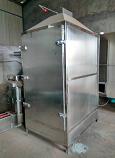

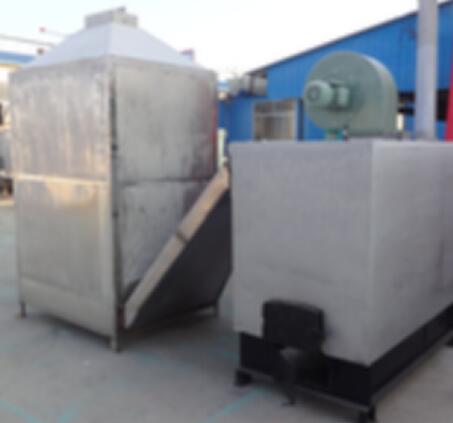
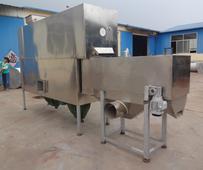
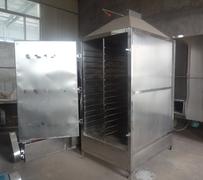
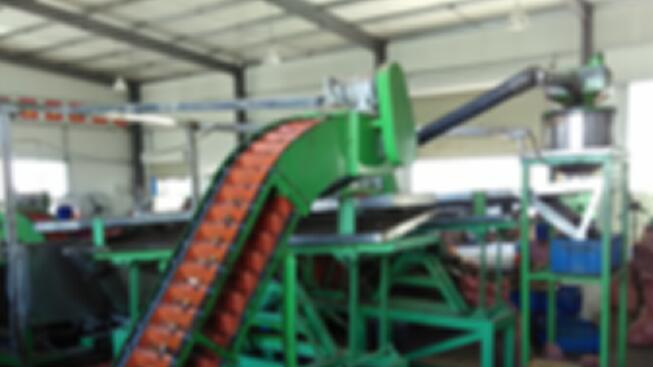
Cashew Nuts Cleaning Line
Cashew Nuts Cleaning Line,Cashew Nuts Processing Machine,Cashew Nuts Cleaning Machine,Cashew Processing Machine
Hebei HELIDA Grain Selecting Machinery Technology Co., Ltd. , https://www.grainseedscleaner.com
![<?echo $_SERVER['SERVER_NAME'];?>](/template/twentyseventeen/skin/images/header.jpg)